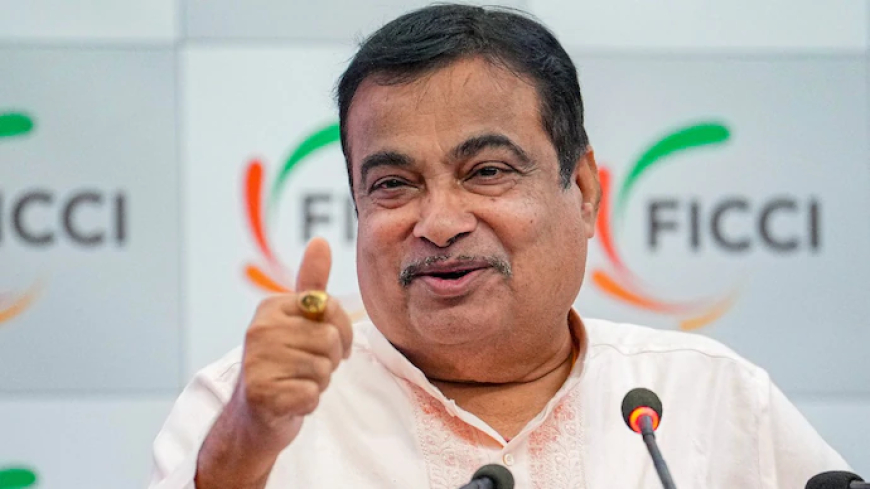Nitin Gadkari Sounds Alarm on Rising Wealth Disparity, Calls for Decentralised Growth to Bridge
Union Minister Nitin Gadkari warns about rising wealth inequality in India and calls for decentralised development to ensure inclusive economic growth.

By Ronald Kapper
Published: July 6, 2025
New Delhi – Union Minister for Road Transport and Highways Nitin Gadkari has issued a stark warning about the deepening economic divide in India, emphasizing the urgent need for decentralised, inclusive growth models to ensure balanced development. Speaking at a policy roundtable in Nagpur over the weekend, Gadkari stressed that rising wealth concentration poses a serious threat to the nation’s social fabric and long-term stability.
“Our development should not be limited to a few urban centres or industrial corridors. We must focus on empowering villages, districts, and rural entrepreneurs,” said Gadkari. “Decentralised growth is no longer a choice—it is a necessity if we want to address wealth disparity.”
His remarks come at a time when India is grappling with increased income inequality, despite impressive GDP growth figures. While the economy is projected to grow at 7.2% in FY25, the benefits of that expansion have largely been concentrated among the top 10% of earners.
India’s Widening Wealth Gap: A Growing Concern
Multiple reports, including recent findings by Oxfam India, have highlighted the glaring disparity between the rich and the poor in India. According to Oxfam’s 2024 report, the top 1% of India’s population owns over 40% of the country’s wealth, while the bottom 50% own just 3%.
Even institutions like the Reserve Bank of India (RBI) have acknowledged the inequality challenge in their economic reviews, pointing to uneven access to credit, education, and infrastructure in non-urban areas.
The rising Gini coefficient—a global measure of income inequality—also supports this growing disparity. In India’s case, it has risen sharply from 0.34 in 2012 to 0.47 in 2024, indicating a worrying concentration of wealth and resources.
Gadkari’s Vision for Decentralised Development
Gadkari, known for his pragmatic views and rural development initiatives, proposed several solutions to tackle economic imbalance:
1. Strengthening Rural Infrastructure
The minister reiterated the importance of building rural roads, digital connectivity, and logistics hubs to help farmers and small entrepreneurs access markets beyond their districts. He cited the Pradhan Mantri Gram Sadak Yojana (PMGSY) as a successful example, but called for expansion in underdeveloped tribal belts and border regions.
2. Empowering Local Enterprises
Gadkari advocated for micro, small, and medium enterprises (MSMEs) as engines of job creation and wealth distribution. He urged financial institutions to increase credit flows to rural start-ups and cooperatives through platforms like the MUDRA Scheme.
“When a farmer becomes a producer and exporter of value-added goods, you create employment and reduce dependency,” he said.
3. Sustainable Industrial Clusters
The minister called for decentralised industrial hubs focused on agro-processing, bamboo, textiles, and renewable energy in Tier-2 and Tier-3 cities, citing successful models from Maharashtra and Madhya Pradesh.
Political and Economic Implications
Gadkari’s remarks have gained traction across political lines, with economists and opposition leaders echoing similar sentiments. Congress MP Shashi Tharoor tweeted that wealth inequality “is the biggest economic threat of our time” and called for broader tax reforms.
Meanwhile, economist Dr. Jean Drèze, co-author of “An Uncertain Glory,” warned in an op-ed in The Hindu that unchecked inequality could lead to “economic apartheid” if not addressed through institutional reforms and social investment.
The Role of Technology and Fintech
One of the bright spots Gadkari highlighted is the potential of digital financial inclusion. With over 500 million Indians now using UPI-based services, fintech is seen as a crucial equaliser in empowering citizens from remote areas.
Initiatives like JAM Trinity (Jan Dhan, Aadhaar, Mobile) have enabled direct benefit transfers (DBT) and broadened access to savings and insurance products.
However, digital literacy and infrastructure gaps in rural India remain a hurdle. Gadkari suggested public-private partnerships to improve internet penetration and tech education in remote districts.
Global Perspective: India at a Crossroads
India’s development model is drawing scrutiny not just domestically but globally. A World Bank report published in December 2024 praised India's rapid growth but warned that inequality and jobless growth could derail progress if unaddressed.
“It’s time we move from GDP-centric development to GDP-plus-equity development,” said Dr. Raghuram Rajan, former RBI Governor, during a panel discussion at IIM Ahmedabad.
Conclusion: Call to Action, Not Just Concern
Nitin Gadkari’s cautionary statement serves as a timely reminder that economic growth must be inclusive to be sustainable. Without bridging the urban–rural divide and fostering decentralized wealth creation, India risks social fragmentation and underutilized human capital.
As India aims to become a $5 trillion economy, experts agree that the next wave of reforms must be people-centric, equitable, and regionally inclusive—turning villages into value hubs and ensuring that prosperity is not gated behind metro skylines.














